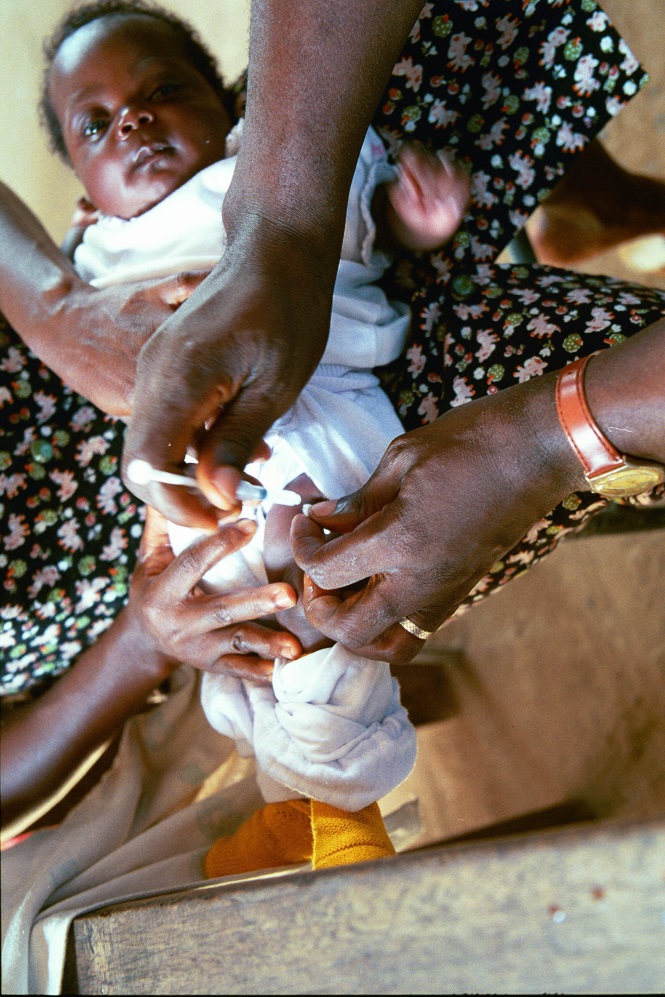Investing in the future of child survival: A pneumonia perspective
|

Dr. Mark Alderson is the director of the pneumococcal vaccine project at PATH. Since 2006, his team has been advancing the development of vaccines tailor-made to protect the world's poorest children from pneumonia—a disease that, together with diarrhea, claims more than two million lives each year. We sat down with him to get insights into strategies that could be child survival game-changers for the future.
As the global health community mobilizes around an integrated strategy to take on the top two infectious diseases threatening children today—pneumonia and diarrhea—what is important to know about pneumonia?
Pneumonia is the leading cause of child deaths worldwide, killing roughly 18 percent of children under age five. Multiple causes of pneumonia exist, but the most common and deadliest is the pneumococcus bacterium, responsible for close to half of the cases of pneumonia in children. Overall, investment in an integrated strategy that combines vaccines, treatments, clean air, and proper diagnosis can bring pneumococcus and other causes of pneumonia under better control—with even greater improvements for child survival if further integrated with diarrhea control efforts.
What is being done to prevent pneumococcal disease and how is the project that you direct contributing?
On the vaccine front, two licensed pneumococcal vaccines exist for young children. They are quite effective against 10 and 13 of the more than 90 varieties of pneumococcus. Groups like the GAVI Alliance have made remarkable progress in helping low-resource countries introduce these vaccines relatively quickly. However, there is still an urgent need for inherently more affordable and broadly protective vaccines targeted to children in the developing world where most of the pneumococcal deaths occur, and this is where our project is advancing the development of new vaccines.
Why are additional vaccines needed and what does an ideal pneumococcal vaccine for the developing world look like?
Current pneumococcal vaccines save many lives, but are not designed to cover all pneumococcal varieties. They are also difficult for low-resource countries to afford without substantial help. An ideal new vaccine would be easy to make, inherently affordable for even the poorest populations, and offer broad coverage across all pneumococcal varieties.
What's an example of a vaccine currently in development that could achieve this goal?
We're particularly excited about the potential of a novel killed pneumococcal whole cell vaccine that we've been working on in partnership with Boston Children's Hospital. This vaccine has been effective in preclinical models and recently completed a Phase 1 clinical trial designed to demonstrate safety and immunogenicity. This whole cell vaccine targets proteins common across all pneumococcal varieties and should be very affordable. If it pans out the way we hope, it could eventually be the standard in the developing world.
Who needs to come together to make a vaccine like this possible?
In advancing a novel vaccine designed for the developing world, rather than for the industrialized world, we are treading on new territory and need a lot of people to come together. We started with a small number of development and research partners, but will need to bring in other collaborators such as manufacturers, regulatory authorities, international organizations, and target countries as we move forward.
What has to happen to ensure access for children in low-resource countries?
Our long-term strategy is to get the vaccine licensed in a high-burden, low-resource country and then gain World Health Organization prequalification that will enable procurement of the vaccine in the developing world. We go through careful partner selection and negotiation processes to ensure alignment of global access goals with our partners. We also work with developing-country manufacturers that can make vaccines available to underserved populations at a low price.
As we look forward to new developments in vaccines, what key opportunities do you see for tackling pneumonia and diarrhea now?
Children get a lot of vaccines now, so one of the things we can do is find ways of integrating pneumonia and diarrhea vaccine strategies into routine immunization programs. Beyond vaccines, leveraging common resources for improving access to treatment, clean air, and sanitation is critical. So is continuing to build public awareness that these are the top killers of kids and that the recipe for success is to tackle them together, with equal vigor.
For more information:
-- Learn about the GAPPD, the new global strategy by WHO and UNICEF to simultaneously tackle pneumonia and diarrhea.
-- Watch: "Integration in Action: 5 Ways to Defeat Diarrhea in Zambia"
Photo credit: Richard Franco














